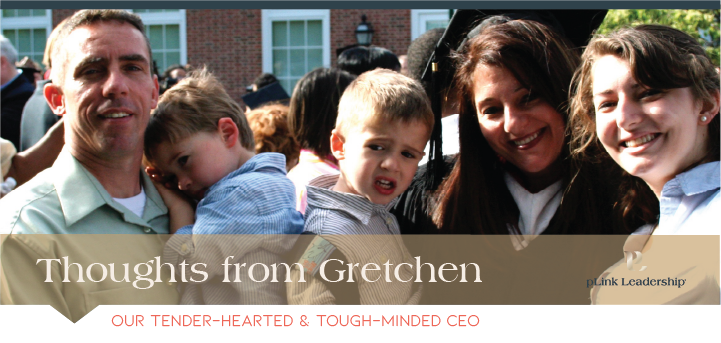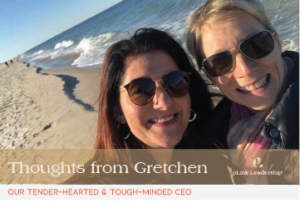
I was in the fifth graduating class of the Master of Applied Positive Psychology (MAPP) program at the University of Pennsylvania in 2010 – and the course of study blew my mind. Applied positive psychology identifies what it takes to create the conditions in which humans and organizations flourish. I went into MAPP as an experienced coach and skilled facilitator. I came out of MAPP with a conviction to fuse the science of positive psychology with the discipline of leadership because I knew that the gap in work/life balance was an issue of well-being, not time management. I also knew that leaders are multipliers and that it was well past time to fuse my coaching practice with my organizational development work.

My guiding inspiration today is the same as it was then: to support leaders in closing the gap between well-suffering and flourishing while magnifying their positive impact. A positive leader is a leader that has a net positive impact on people, places, goals, and ideas. Every day, they hold themselves accountable for achieving while simultaneously maximizing the experience of others. Others observe in them:
- A constructive attitude – always building towards what they want
- General optimism – creating opportunities out of setbacks and challenges
- Grounded confidence – engaging others without defense or pretense
- Trustworthiness – earned by benevolence, integrity, and competence
- Vibrancy – an energy that is engaging, contagious, and magnetic
My own experience has taught me that positive leadership requires focused attention and dedicated practice. Some days come together with glorious ease, but on other days, I feel like Sisyphus rolling my boulder up a hill only to have it roll down again. Over the last two and a half years, I’ve had Sisyphus days more often than not. To manage the struggle, I’ve developed a cadence of hope, drive, and rest that I’ll be sharing in a forthcoming book, and soon pLink Leadership will be leading Hope, Drive & Rest (HD&R) retreats and mastermind groups – stay tuned!
My encouragement during these summer months is to create your own regular cadence of hope, drive, and rest. This is how I stay not only resilient but truly energy-rich.
Until soon,



Developing a
Team?
Reduce overwhelm by articulating a 90-day vision for your team. Imagine that you are bringing the horizon point much closer and narrowing the focus. Be sure that you describe the WHY of the vision as well as the most important near-term priorities.

Developing an
Organization?
Give yourself permission to leave things undone, relax into the present moment, and truly let go of the things that make you anxious, even if only for a few hours. Your presence is the largest culture influencer in the organization, and culture determines how people prioritize work and approach problems.





